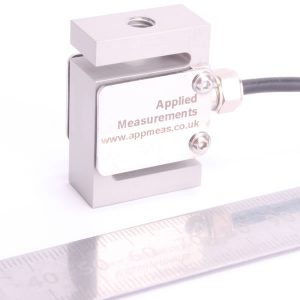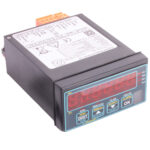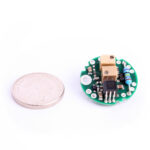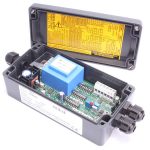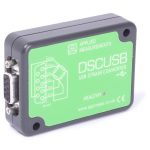At a Glance
- Capacities: 0-1kg up to 0-50kg
- Output: 2mV/V nominal
- Accuracy: <±0.03%/RC
- Only 35mm High
- IP51 Environment Protection
- Custom Versions Available
- Miniature and Compact – Easily fits in your application.
- Guaranteed High Performance – Dual bending beam design.
- Optional IP67 Gel-Filling – Ideal for wave tank monitoring.
- Fast and Simple Installation – With standard or customised mounting bases and fixtures.
- Improved Accuracy -With our specially designed rod end bearings.
- Submersible Versions Available – For marine and underwater applications.
- Customisation Available to Suit Your Specific Application
Description
Applied Measurements DBBSMM miniature S-Beam load cell (or Z-Beam load cell) is suitable for use in tension and compression and lends itself to both force and load measurement applications where the space to mount a standard size load cell is not available.
All of our miniature S-Beam load cells offer high accuracy of better than ±0.03% of their rated capacity and can be optionally gel-filled to provide a waterproof device suitable for applications such as wave tank monitoring.
Rod end bearings and load buttons are available (see gallery images) to provide optimum loading conditions.
If you require a miniature S-Beam load cell with a capacity greater than 50kg, Applied Measurements can manufacture special versions of the DBBSMM with measuring ranges of 100kg, 150kg, 200kg and upwards on request. Please contact your Applied Measurements expert sales team using the form in the sidebar to discuss your miniature s-beam load cell requirement in detail.
If you are not space-restricted, our DBBSM series of load cells covers load ranges up to 0-30,000kg (300kN).
Our s-beam load cells can be supplied with our Load Cell Instrumentation.
Technical Specifications
| Rated Capacity (RC) | kgf | 0-1, 0-2, 0-5, 0-10, 0-25, 0-50 |
|---|---|---|
| Operating Modes | Tension/Compression / Tension & Compression | |
| Sensitivity (RO) | mV/V | 2.0 nominal |
| Zero Balance/Offset | ±%/Rated Output | <1.0 |
| Zero Return after 30 mins | ±%/Applied Load | <0.03 |
| Output Symmetry (tension vs. compression) | ±%/Rated Output | <0.10 |
| Non-Linearity | ±%/Rated Output (BFSL) | <0.03 |
| Hysteresis | % / Rated Output | <0.02 |
| Output Symmetry | ±%/Rated Output | <0.10 |
| Repeatability | ±%/Rated Output | <0.02 |
| Temperature Effect on Zero | ±%/Rated Output/˚C | <0.005 |
| Temperature Effect on Sensitivity | ±%/Applied Load/˚C | <0.005 |
| Input Resistance | Ohms | 375-420 nominal |
| Output Resistance | Ohms | 340-360 nominal |
| Insulation Resistance | Megohms | >5000 @ 50Vdc |
| Excitation Voltage | Volts AC or DC | 10 recommended (2-15 acceptable) |
| Operating Temperature Range | ˚C | -20 to +80 |
| Compensated Temperature Range | ˚C | 0 to +70 |
| Storage Temperature Range | ˚C | -20 to +80 |
| Safe Overload | % of Rated Capacity | 150 |
| Ultimate Overload | % of Rated Capacity | 200 |
| Maximum Safe Side Load | % of Rated Capacity | 30 |
| Deflection @ Rated Capacity | mm (nominal) | 1kg = 0.50, 2kg = 0.30, 5kg = 0.26, 10kg = 0.19, 25kg = 0.12, 50kg = 0.08 |
| Fundamental Resonant Frequency* | Hz | 1kg = 200, 2kg = 300, 5kg = 600, 10kg = 950, 25kg = 1900, 50kg = 3000 |
| IP Rating (Environmental Protection) | IP51 (IP67 optional) | |
| Weight (excluding cable) | grams | 25 |
| Fatigue Life | Consult Sales | |
| Cable Length (as standard) | metres | 2 |
| Cable Type | 4-core screened, PVC sheath, Ø3.5 | |
| Construction Material | Aluminium Alloy | |
| Resolution | 1 part in 250,000 (with appropriate instrumentation) | |
| *The resonant frequency is calculated with the body of the load cell attached to a large plate, ensuring that only the sensing element oscillates: This is vital to achieve the highest natural frequency and subsequent frequency response. | ||
Product Dimensions (mm)
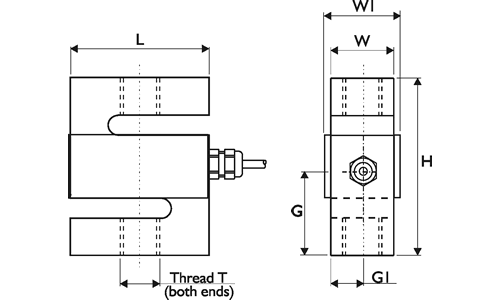
CAPACITY (kgf) | H | L | W | W1 | G | G1 | Threads T |
|---|---|---|---|---|---|---|---|
1, 2, 5, 10, 25, 50 | 35 | 24 | 12 | 16 | 17.5 | 6 | M6x1 |
Wiring Details
| Wire | Designation |
|---|---|
| Red | +ve excitation |
| Blue | -ve excitation |
| Green | +ve signal (tension) |
| Yellow | -ve signal |
| Screen | To ground - not connected to load cell body |
Ordering Codes & Options
| Core Product | Capacity (inc Engineering Units) | Cable Length (m) | Specials Code | Example Result |
|---|---|---|---|---|
| DBBSMM | 1kg | 002 | 000 | DBBSMM-1kg-002-000 |
| DBBSMM | 2kg | 002 | 000 | DBBSMM-2kg-002-000 |
| DBBSMM | 5kg | 002 | 000 | DBBSMM-5kg-002-000 |
| DBBSMM | 10kg | 002 | 000 | DBBSMM-10kg-002-000 |
| DBBSMM | 25kg | 002 | 000 | DBBSMM-25kg-002-000 |
| DBBSMM | 50kg | 002 | 000 | DBBSMM-50kg-002-000 |
How to Install an S-Beam Load Cell
Our Applied Measurements experts have put together a 5-step guide to demonstrate how to correctly install an S-beam load cell.
Step 1 – Keep the Forces Centrally Aligned
To reduce any off-axis loading, forces must be centrally aligned through the centre of the load cell. We can supply optional load buttons and rod ends which work to reduce any side loading.
Step 2 – Do Not Overtighten the Rod Ends and Load Buttons
When using rod ends and load buttons be sure not to overtighten them when attaching them to the S-beam load cell. As this can cause damage to the load cell.
Step 3 – Always Leave a Gap
Ensure that the rod ends and load buttons do not touch the central beam. If a gap is not maintained, the central beam will not be able to move freely when tension or compressive force is applied.
Step 4 – Mount on a Flat Surface
Always secure the S-beam load cell to a clean, flat surface of better than 0.005mm surface flatness.
Step 5 – Contact with Active Area Only
When installing the S-beam load cell ensure the load is applied to the active end area only.
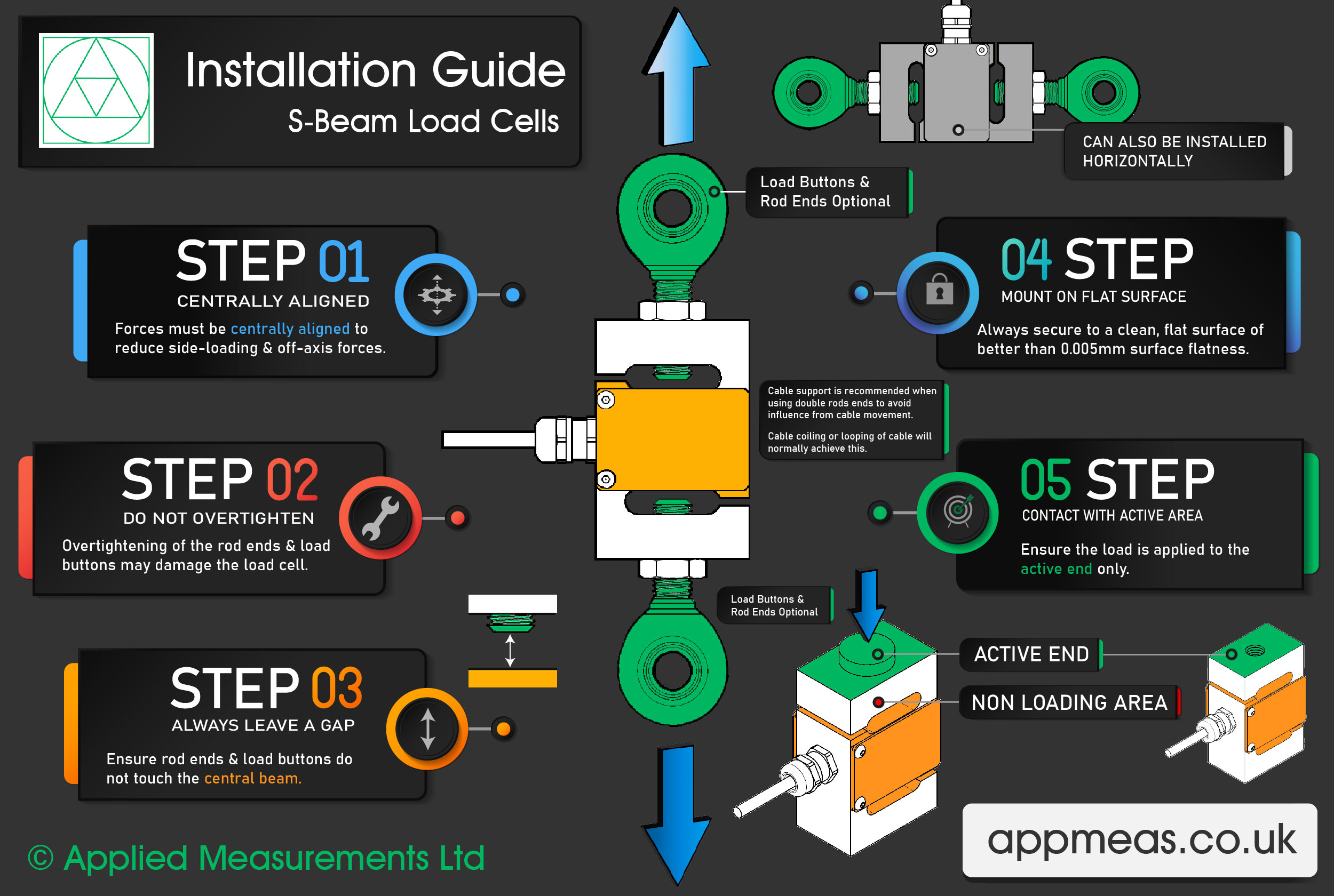
Mounting And Installation Accessories
Load Buttons and Rod End Bearings
Designed to align forces through the principle axis of the load cell thus reducing the effects of extraneous forces, hence offering improved performance from the cell.
Load buttons are used where compressive forces are applied.
Rod End Bearings are used where tensile forces are being applied.
Load Buttons for Compressive Use
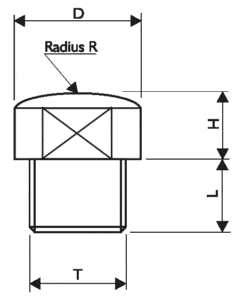
| THREAD T | M6 x 1 |
|---|---|
| D | 12.5 |
| H | 6 |
| L | 9 |
| R | 200 |
Rod End Bearings for Tension Use
Maintenance-free rod ends are a complete units made up of a housing with both an integral shank (with an internal or external thread) and a maintenance-free spherical plain bearing, located within the housing.
- Supports radial loads in a tensile or compressive direction.
- Suitable for unilateral loads – can support alternating loads and alternating loads in combination with bearing GE..UK-2RS, consult sales.
- Zinc plated for corrosion resistance.
- Are maintenance-free.
- Fitted with radial spherical plain bearings GE..UK
- Hard chromium/PTFE composite sliding contact surfaces.
- Enables compact adjacent construction thanks to its thin walled design of the eye housing.
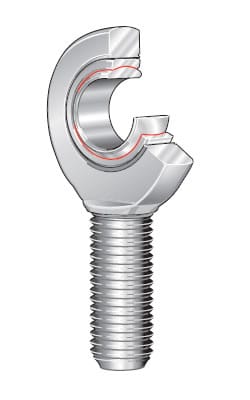
GAR..UK
(right hand thread)
To ISO 12 240-4, dimension series E, type M
Shank with external thread
Maintenance-free
ISO 12 240-4, dimension series E, type M
Sliding contact surface: hard chromium/PTFE
Series GAR..UK
Sliding material: PTFE composite
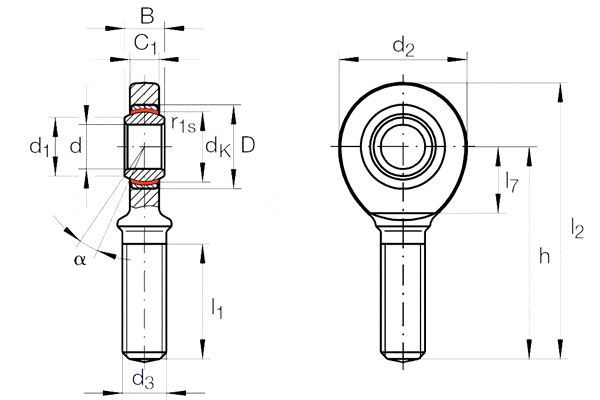
| LOAD CELL | SHAFT DIAMETER | ORDERING CODE | MASS | DIMENSIONS | |||||||
|---|---|---|---|---|---|---|---|---|---|---|---|
| d | WITHOUT SEALS | WITH SEALS | ≈ kg | d | D | B | dK | d1 | d2 | d3 | |
| DBBSMM | 6 | GAR 6 UK | - | 0.017 | 6-0.008 | 14 | 6-0.12 | 10 | 8 | 21 | M6 |
| LOAD CELL | Degrees | Chamfer Dimension | Basic Load Ratings | Radial Internal Clearance | Shaft Diameter | ||||||
|---|---|---|---|---|---|---|---|---|---|---|---|
| h | C1 | α | l1 | l2 | l7 | r1s min. | dyn. Cr N | stat. C0r N | d | ||
| DBBSMM | 36 | 4.4 | 13 | 18 | 46.5 | 12 | 0.3 | 3 600 | 6 920 | 0 - 0.032 | 6 |
Published Sensor Application Articles
Below is a selection of published sensor application papers and journals that show you how the DBBSMM miniature s-beam load cell could be used in specific applications. See our published sensor application articles page for many more.
The importance of abductor pollicis longus in wrist motions: A physiological wrist simulator study
Darshan S.Shah, Claire Middleton, Sabahat Gurdezi, Maxim D.Horwitz, Angela E.Kedgley, Department of Bioengineering, Imperial College London, London, United Kingdom, Department of Hand Surgery, Chelsea and Westminster Hospital, London, United Kingdom. Journal of Biomechanics Volume 77, 22 August 2018, Pages 218-222. Available under a Creative Commons Attribution 4.0 International license.
Bovine and degenerated human annulus fibrosus: a microstructural and micromechanical comparison
Claudio Vergari, Daniel Chan, Andrew Clarke, Jessica C. Mansfield, Judith R. Meakin, Peter C. Winlove. Biomechanics and Modeling in Mechanobiology. August 2017, Volume 16, Issue 4, pp 1475–1484. Available under a Creative Commons Attribution 4.0 International license.
Case Studies

How to measure grip strength of an eagle for BBC Natural World
Last year, we were asked to design a sensor to measure the grip strength of a golden eagle named Tilly, for the award-winning BBC documentary series, Natural World. Challenge - to find a load cell that could withstand the estimated grip strength of an eagle. As Tilly had been trained to catch and grip a tennis ball, the load cell needed to be small enough to fit inside a similar-sized measuring device yet withstand Tilly's tremendous grip strength. Thanks to their unique design, our DBBSMM miniature s-beam load cells were ideal for the job. Not only are they very compact but their s-shaped design offers superior side-load rejection and high accuracy.
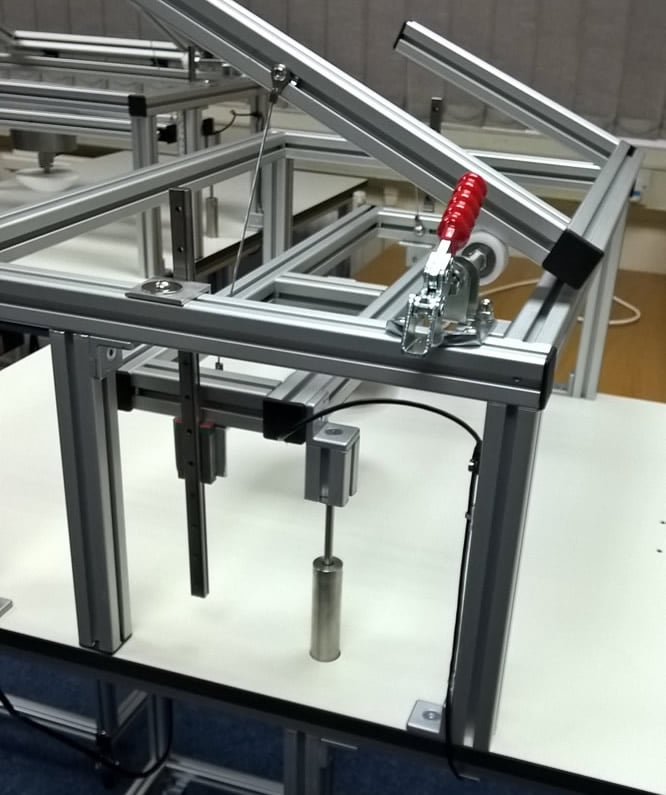
Universal Fabric Tension Tester for All Fabrics and Styles
The Challenge - Accurately Measure Fabric Tension on Any Style of Furniture. Fabric strength testing guarantees the fabric being used on furniture meets the high quality needed for durability, comfort and support. Choosing the wrong type of fabric can lead to fabric tearing, loss of customer satisfaction and a decrease in sales and profit. Find out how our miniature s-beam load cell, intuitive4-L digital indicator and industrial LVDT displacement sensors were used to determine fabric strength.
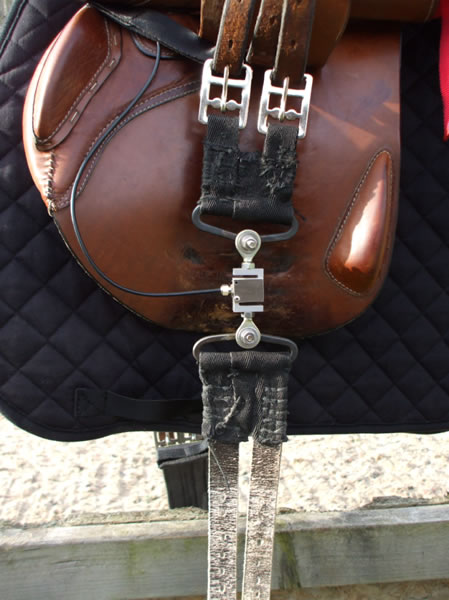
Force Measurement Determines The Effect of Girth Tension on Horse Gait
Using electrical systems for the measurement of mechanical forces is by no means limited to machines and laboratory based applications. In her recently completed research thesis ‘Girth Tensions and their Effects on Equine Stride Characteristics’, Sue Wright of Moulton College Northampton used load cells, motion sensors and GPS amongst other technologies to measure and record the tension within the girth strap used to hold the saddle in place.

